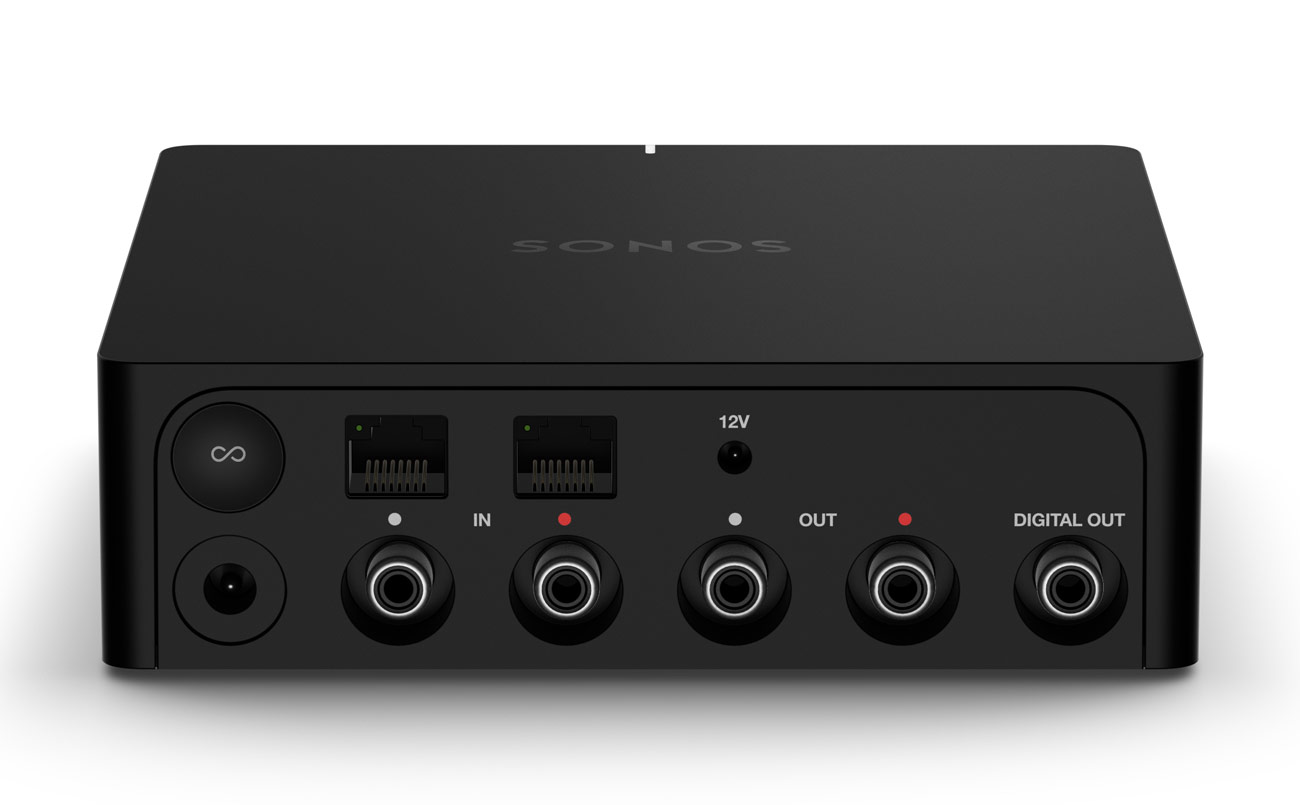Brand: Sonos
Product: Port
Release Date: January 2020
Price: $399
From: sonos.com
The Sonos Port ($399) is one of Sonos’s newest audio products, and it’s essentially a newer and more versatile (and more expensive) version of the Sonos Connect ($349), which has been around for years. Like the Connect, the Port is designed to do one of two things. It can be connected to a stereo or receiver, and thus allow you to control the home sound system you already have just like a Sonos system (via the Sonos app). Or it can be connected to a turntable (one with a phono preamp) or CD player so you can stream its audio to your existing Sonos speakers. The main differences from the original Connect is that the Port supports AirPlay 2, has a better built-in DAC and, has a cherry on top, actually looks like a typical home audio component.
What We Like
Unlike the Sonos Connect and its unconventional white-stool appearance, the Port isn’t going to stick out like a sore thumb when you place it with all your other matte black audio equipment. It’s also more versatile; like Sonos’s newer speakers and all-new Amp, the Port supports AirPlay 2 making it easier to stream music straight from an iPhone or a Mac. It also means that the Port (and the connected system) can be integrated into AirPlay 2 multi-room system, which is a nice option to have.
Maybe the most interesting upgrade is the Port’s 12-volt trigger, which gives it (and you) a little more control of the connected receiver or amp. It essentially eliminates the need for you to manually turn on the receiver or stereo, or switch to the proper inputs, because everything will just turn on and work when you start streaming via the Sonos app to stream music. There’s a catch, however, and it’s only newer stereos and receivers that have a 12-volt trigger input. (My three-year-old Yamaha receiver didn’t support it, so I still have to use the receiver’s remote to switch inputs, unfortunately.)
It’s true that most newer audio components have built-in Bluetooth, so simply adding “streaming” to your stereo receiver on its own isn’t actually a big feature of the Port. However, the Port does have a fancy new digital-to-analog converter (DAC), compared to the Connect, and supports Wi-Fi streaming like Spotify Connect and AirPlay 2; so it’s going to stream higher-resolution and all-around better sounding audio than Bluetooth.
Watch Out For
There’s no getting around the fact that $400 for what is a connection device is extremely expensive. The Port also doesn’t have a built-in amp, like the (even more expensive) Sonos Amp, so it’s only going to work directly with audio components and active speakers that have built-in amplification. If you’re looking to hook the Port up to your existing turntable, it’ll have to have a built-in phono preamp, or you’ll need an external one.
The Port is a two-way audio component because you can stream audio to it (from your smartphone) and from it (if connected to a turntable or CD player). It’s minor, the Port only comes with one RCA cable, so you’ll have to buy a second if you want to utilize its a stereo RCA input and output at the same time.

The Port is designed to do one of two things. It can be connected to a stereo or receiver, and thus allow you to control the home sound system you already have just like a Sonos system (via the Sonos app). Or it can be connected to a turntable (one with a phono preamp) or CD player so you can stream its audio to your existing Sonos speakers.
Other Options
There are two alternatives. You can find the Sonos Connect ($349) even though it’s antiquated; it has a worse built-in DAC and doesn’t support AirPlay 2. Then there’s the Sonos Amp ($599), which is significantly more expensive and, because it has a built-in amp, can actually drive larger loudspeakers.
Verdict
The Sonos Port isn’t a very complicated device and it does exactly what it claims to do. If you have a system consisting of a receiver and two passive bookshelf speakers, or maybe you have a pair of active bookshelf speakers, or maybe you have a turntable (with a phono preamp), the Port will allow you to integrate any of them into a Sonos wireless system. Yes, it’s fairly expensive, but it just works.
Sonos provided this product for review.




